Moths are fascinating creatures that come in a range of shapes, sizes, and colors. With over 10,000 species within the Arctiidae family alone, these insects display impressive patterns on their wings. Although generally nocturnal and often mistaken for their daily counterparts, the butterflies, many species of moths exhibit stunningly vibrant hues and fly during the day, contradicting popular belief.
The majority of moths can be categorized into five primary families—Arctiidae, Noctuidae, Geometridae, Saturniidae, and Sphingidae. Each family exhibits unique morphological characteristics, making moths a diverse and intriguing group of insects. Their larvae, known as caterpillars, construct cocoons for metamorphosis, emerging as fully grown moths with wings upon completion.
Moths can be found across the globe, inhabiting various habitats and serving essential roles in their ecosystems. As pollinators and a vital food source for other creatures, the world of moths is brimming with fascinating diversity and captivating beauty waiting to be explored.
Moths Versus Butterflies: What’s the Difference?
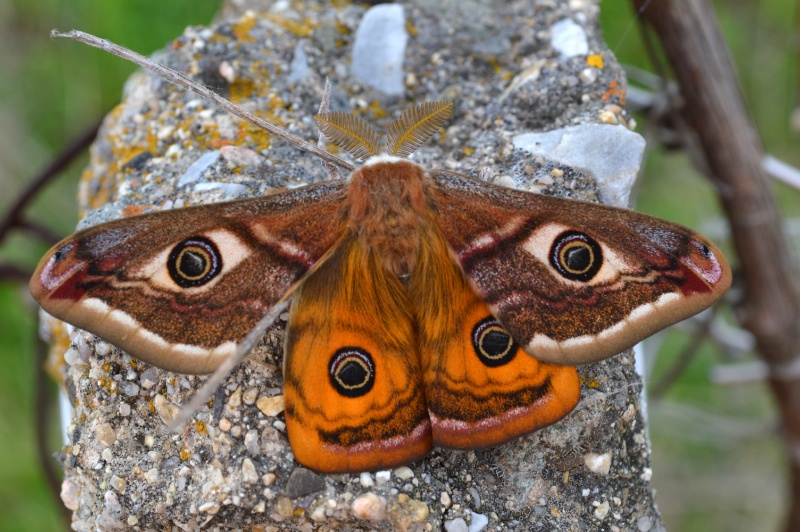
Moths and butterflies may seem similar at first glance, but some key differences can help distinguish these fascinating creatures from each other. One of the most noticeable differences is their antennae. Butterflies have club-shaped antennae with a long shaft and a bulb at the end, while moths have feathery or saw-edged antennae.
In terms of behavior, butterflies are ectotherms that rely on heat from external sources. They need their body temperatures to be around 85 degrees to fly, often using the sun to achieve this.
On the other hand, moths prefer to rest during the day, usually in wooded or dark habitats. When indoors, moths seek out dark environments such as cabinets and closets.
Moreover, it’s a common belief that moths are nocturnal and brown, while butterflies are diurnal and colorful. Although this is generally true, it’s not a foolproof identification method.
Some stunningly beautiful moth species are active during the day. Additionally, butterflies usually have thinner antennae and small clubs at the end, whereas moth antennae can appear varied but lack the club end.
Moths and butterflies also differ in their wing structure and resting positions. While resting, butterflies hold their wings together, vertically above their bodies. Moths, however, tend to spread their wings out horizontally or fold them over their bodies.
In summary, although moths and butterflies may share some similarities, their antennae, behavior, appearance, and wing structure differences can help one discern between them. Understanding these distinctions can enrich one’s appreciation of these diverse and intriguing creatures.
Impacts of Moths on Plants
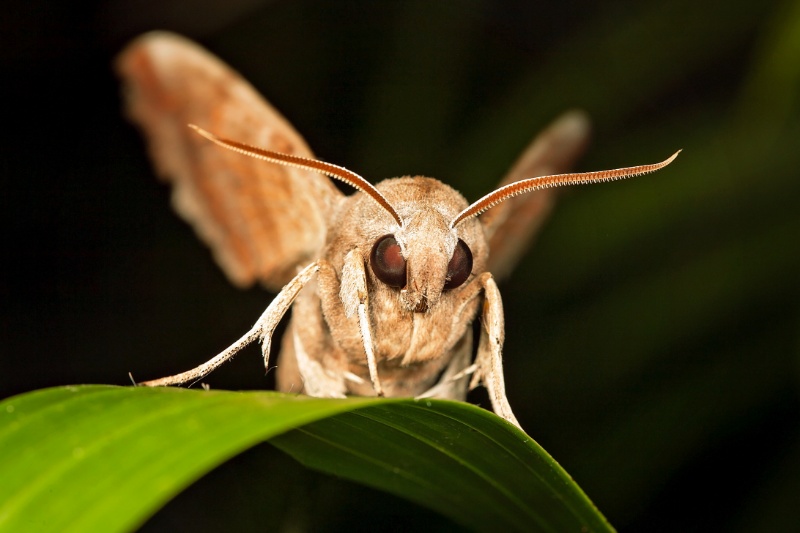
Moths develop through various life stages, impacting different aspects of plant life. Specifically, moth caterpillars feed on the leaves of various plants, which can sometimes lead to substantial damage to crops such as apples, corn, wheat, and sorghum, among others. To protect themselves from the relentless consumption by caterpillars, some plants have evolved to produce specialized chemicals that make their leaves less appealing.
However, moths are not just a threat to plants; they also play vital roles as pollinators. Visiting flowers to feed on their nectar, moths inadvertently pick up pollen and transfer it to other flowers, assisting in seed production. Studies have revealed that many moths carry pollen from various plant species, including some rarely visited by other known pollinators like bees, hoverflies, and butterflies.
Some plant species even rely on specific moths for their survival and reproduction. A prime example of such a relationship is the association between yucca plants and yucca moths.
The yucca moth is responsible for transferring pollen from one yucca flower to another, ensuring successful pollination. In this mutually beneficial relationship, the moth’s larvae feed on a portion of the fertilized seeds of the yucca plant.
In summary, moths can have both detrimental and beneficial impacts on plants. They can become pests when their caterpillar stages cause severe damage to crops, but they also serve essential roles as pollinators that assist in plant reproduction and the maintenance of diverse ecosystems.
See Related: Types Of Butterflies
Threats to Moths (and Butterflies)

Moths and butterflies, collectively known as Lepidoptera, face numerous threats in their natural habitats. These threats affect their survival and can lead to a decrease in their overall populations.
Habitat alteration and destruction are among the most significant threats to these insects. As humans continue to urbanize and develop natural lands, the feeding and breeding grounds for moths and butterflies are often destroyed. Moreover, these creatures are reliant on specific plant species for their sustenance. The removal or decline of these plants can drastically reduce their chances of survival.
Insecticides and pollution also pose a considerable risk to moth and butterfly populations. Chemicals used to control other pests can inadvertently harm these winged insects, leading to a decline in their numbers. Air and water pollution may impact the quality of the habitats that they rely on, causing further difficulties in their survival.
Climate change is another factor contributing to the decline of moths and butterflies. The shift in temperature and seasonal patterns affects the availability of essential resources such as food plants and suitable breeding grounds. As global warming progresses, these insects may struggle to adapt to their changing environments.
Invasive species and pathogens can also threaten moth and butterfly populations by competing for resources, preying on them, or spreading diseases. The introduction of non-native species into an area can upset the delicate balance of an ecosystem, leading to a decrease in native moth and butterfly populations.
In summary, moths and butterflies face numerous challenges in their natural environments. From habitat destruction to climate change, these delicate creatures must continually adapt to survive in an ever-changing world.
Types of Moths and Species of Moths
1. White-lined Sphinx Moth – Hyles lineata, Sphingidae
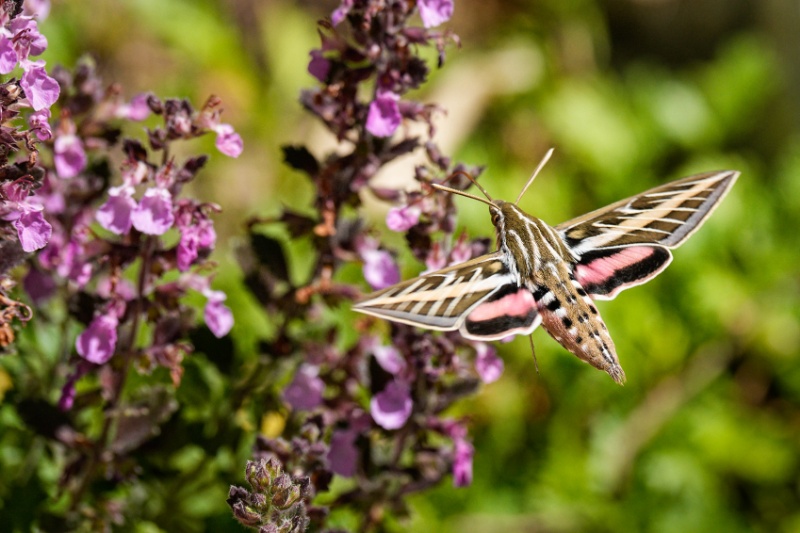
The White-lined Sphinx Moth is found in North America and is known for its rapid, hovering flight patterns. This moth is an important pollinator, visiting various flowers during its active hours. Their larva is called the Hornworm due to its distinct tail-like spike.
2. Hummingbird Hawk-moth – Macroglossum stellatarum, Sphingidae
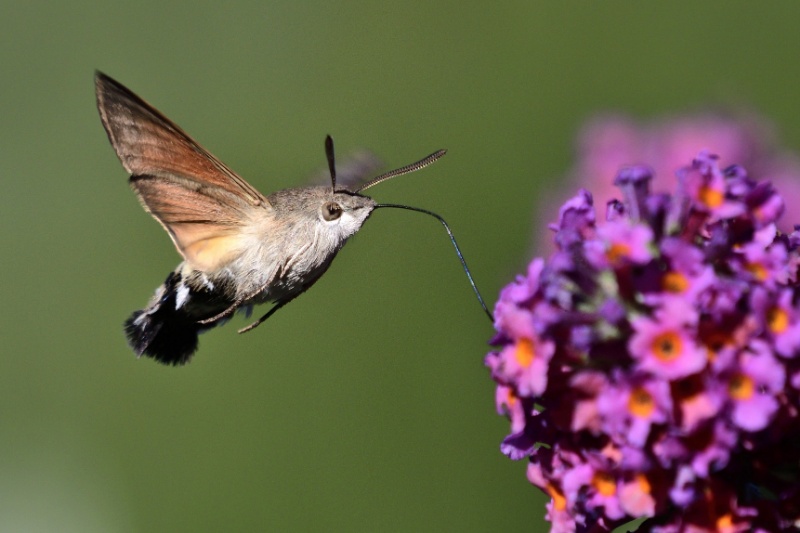
The Hummingbird Hawk-moth has a broad geographic distribution, being found in Europe, Asia, and Africa. Like the White-lined Sphinx Moth, this species is known for hovering and quickly darting between flowers to collect nectar. Adults have a long proboscis, making them efficient pollinators.
3. Luna Moth – Actias luna, Saturniidae
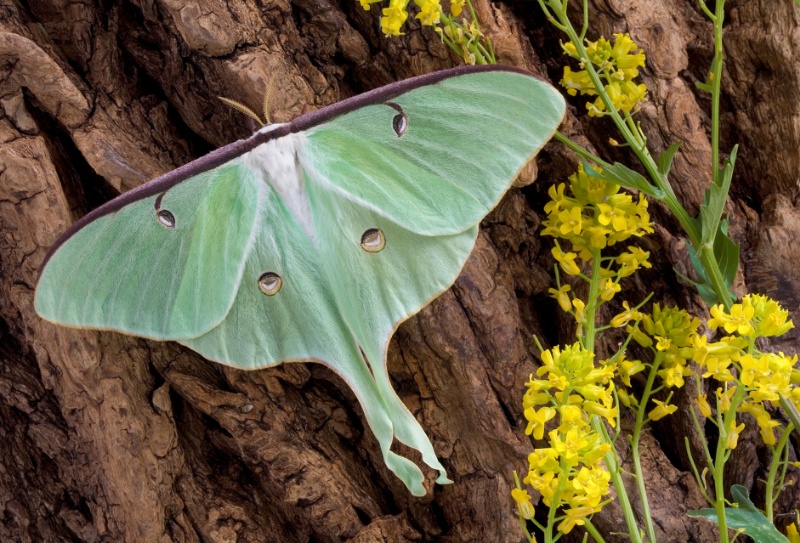
The Luna Moth, native to North America, is a distinctive large moth with a wingspan of up to 4.5 inches and long, tapering tails. The beautiful green color and eyespots on the wings make it one of the most recognizable moth species. The larvae feed on the leaves of deciduous trees like hickory and walnut.
4. Io Moth – Automeris io, Saturniidae
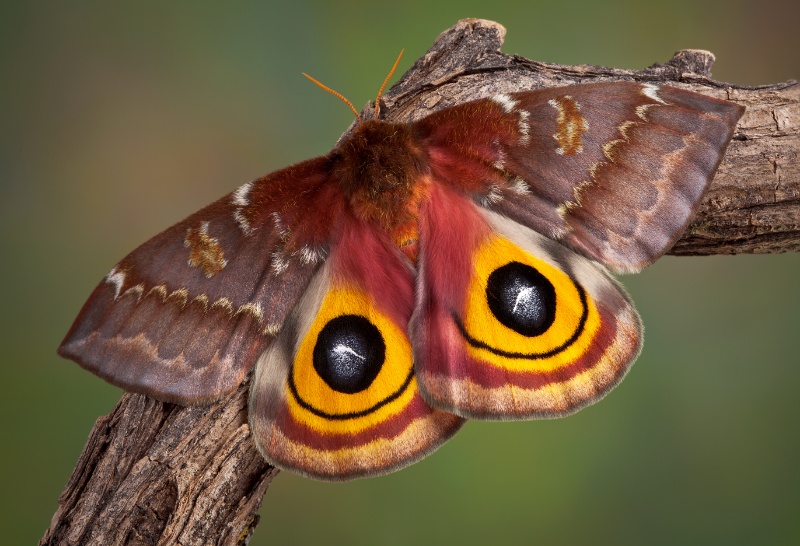
The Io Moth, found in the United States and Canada, has bright yellow or red hindwings and large eyespots, which serve as a defense mechanism against predators. The larval stage of this moth has stinging hairs that can cause skin irritation when touched.
5. Garden Tiger Moth – Arctia caja, Erebidae
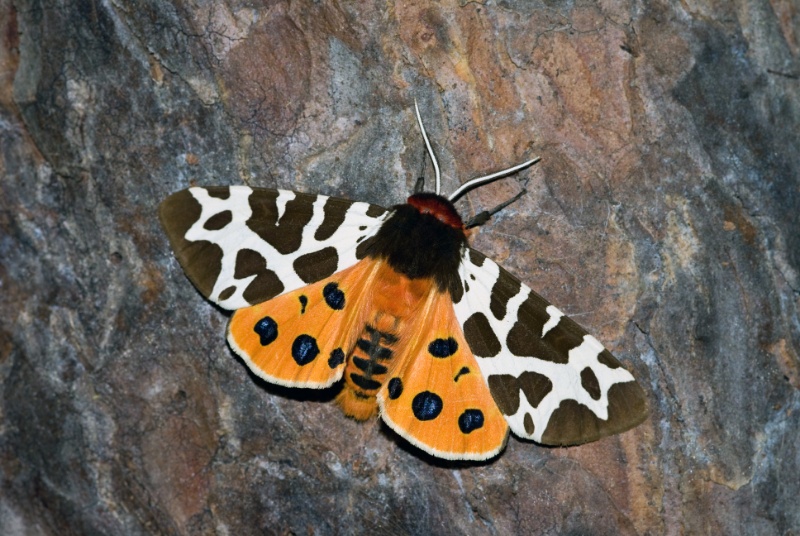
The Garden Tiger Moth, native to Eurasia, has a distinct black and orange pattern on its wings. The larvae, known as “woolly bears,” have a dense layer of hairs that protect them from predators. This species can be found in various habitats, including gardens and woodland.
See Related: What Do Butterflies Eat
6. Atlas Moth – Attacus atlas, Saturniidae
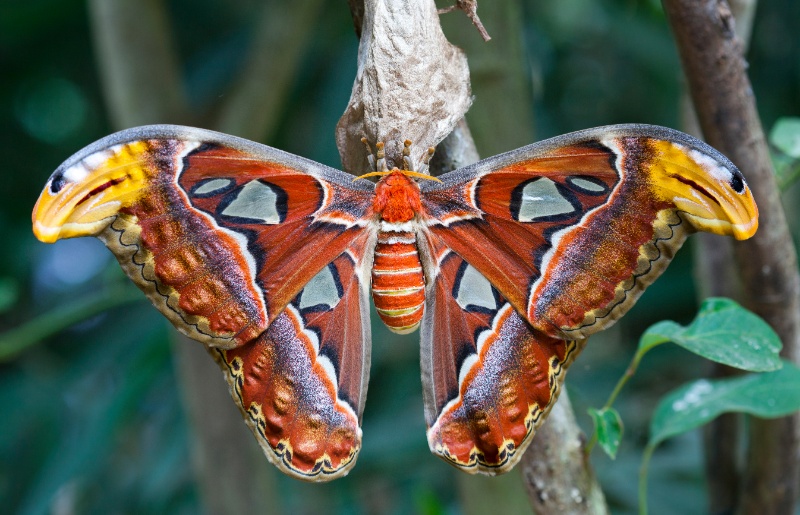
The Atlas Moth, native to Southeast Asia, is known for its large size, with a wingspan reaching up to 12 inches. The intricate wing patterns resemble a map, hence its name. They lack mouths in the adult stage and only live for about a week, relying on their stored energy from the larval stage.
7. Giant Leopard Moth – Hypercompe scribonia, Arctiinae
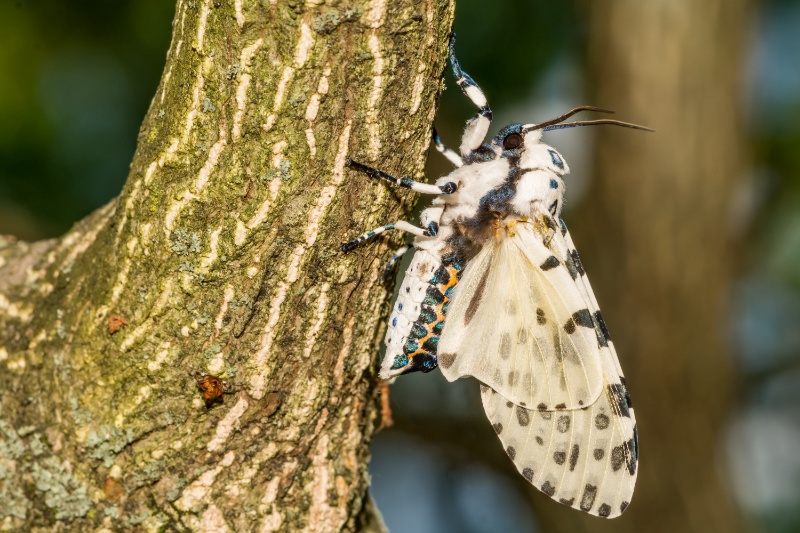
The Giant Leopard Moth, found in North America, has striking white wings with black spots and blue iridescent markings. This nocturnal species is attracted to lights and can be found in various habitats.
8. Polyphemus Moth – Antheraea polyphemus, Saturniidae
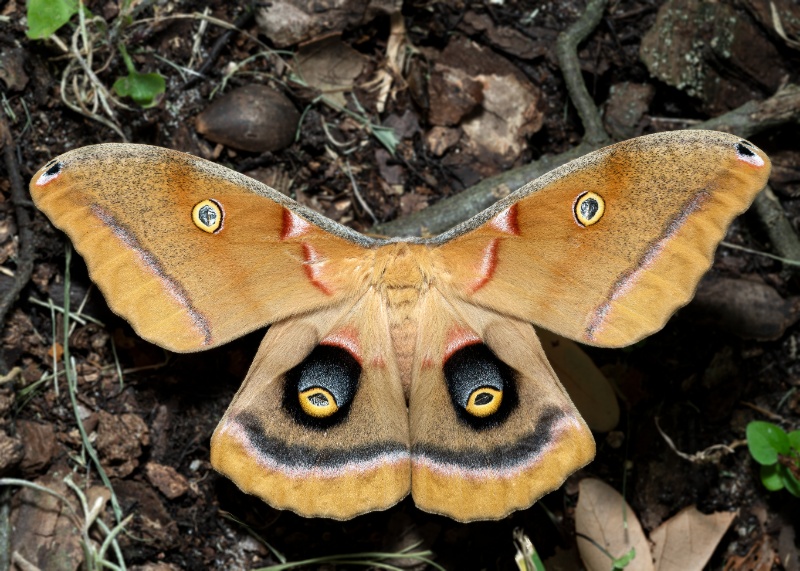
The Polyphemus Moth, another North American native, is known for its distinct eyespots on the wings, which mimic the eyes of a larger animal, deterring predators. The larvae feed on a variety of trees, including oak and maple.
9. Rosy Maple Moth – Dryocampa rubicunda, Saturniidae
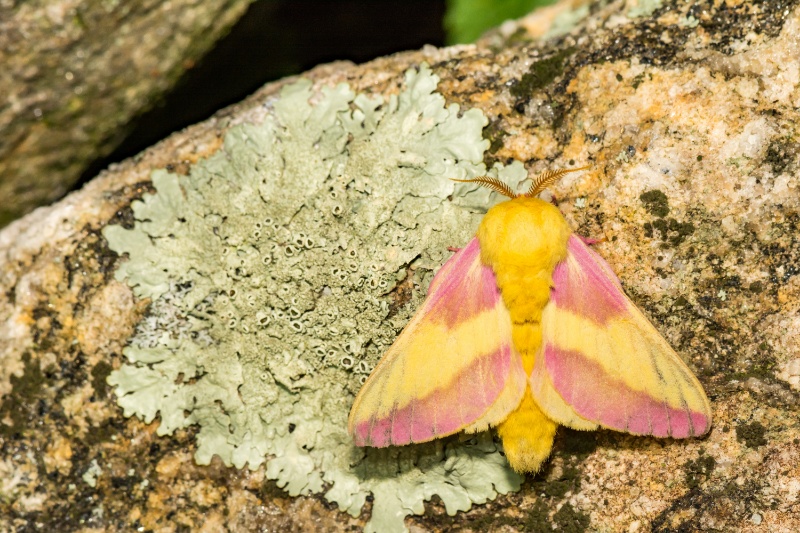
The Rosy Maple Moth, found in eastern North America, has vibrant pink and yellow wings. The larvae feed on maple leaves, giving the moth its name.
10. Cinnabar Moth – Tyria jacobaeae, Erebidae
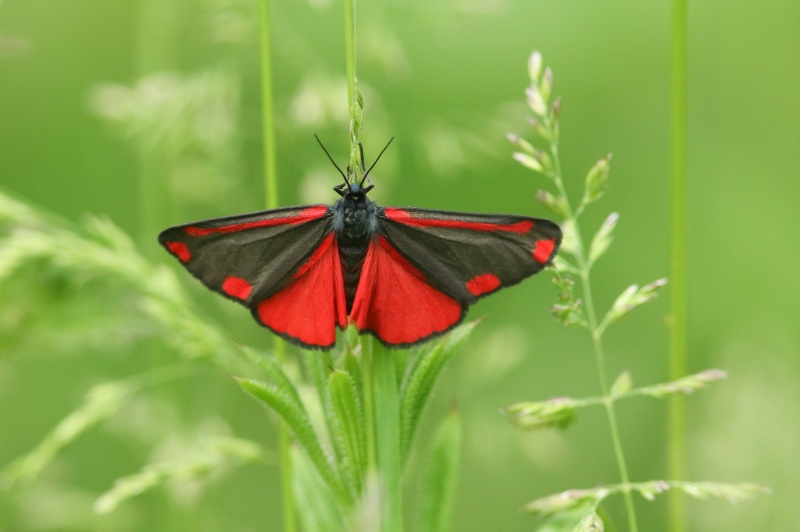
The Cinnabar Moth, native to Europe and North Africa, is most recognized by its deep red and black wings. The larvae feed on toxic plants like ragwort, making them poisonous to potential predators.
11. Hercules Moth – Coscinocera hercules, Saturniidae
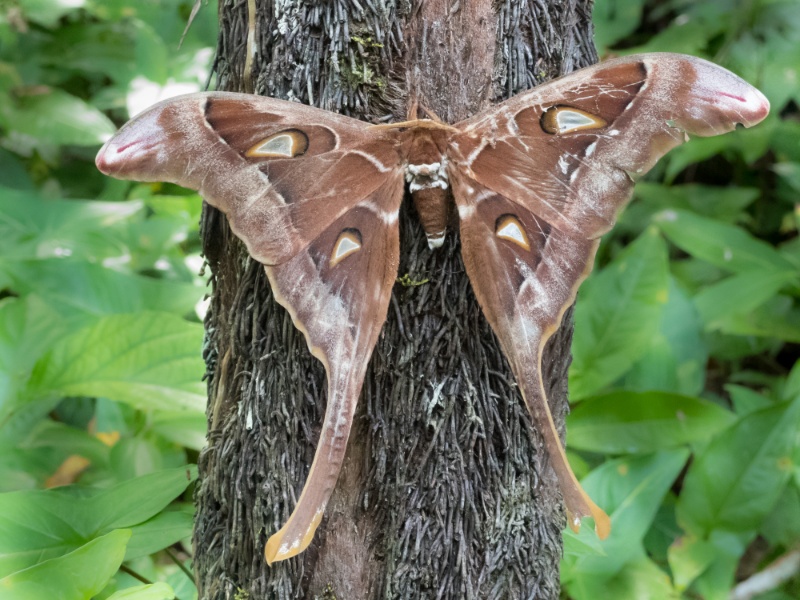
The Hercules Moth, native to northern Australia, has the largest wingspan of any moth, reaching up to 14 inches. The females are significantly larger than the males. The larvae feed on the leaves of eucalyptus, making them toxic to potential predators.
12. Comet Moth – Argema mittrei, Saturniidae
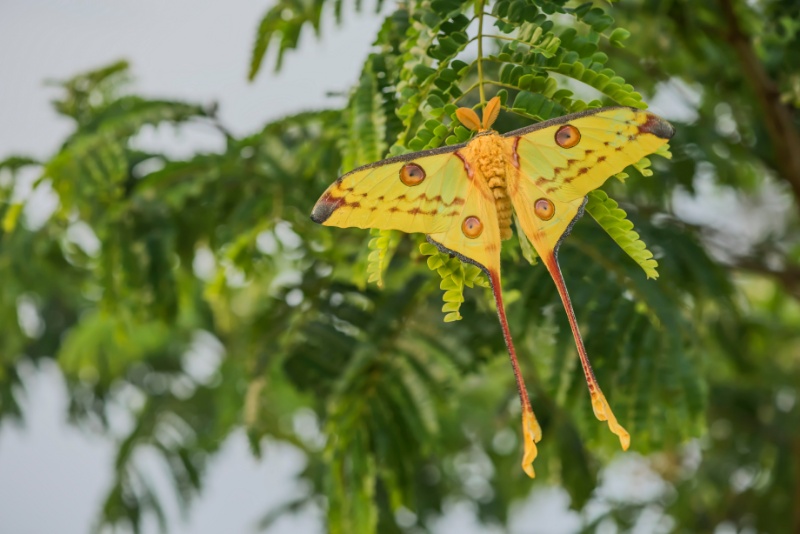
The Comet Moth, native to Madagascar, is named for its elongated tail-like extensions on the hindwings. Males have a feather-like antenna, which they use to locate females by detecting their pheromones.
13. Madagascan Sunset Moth – Chrysiridia rhipheus, Uraniidae
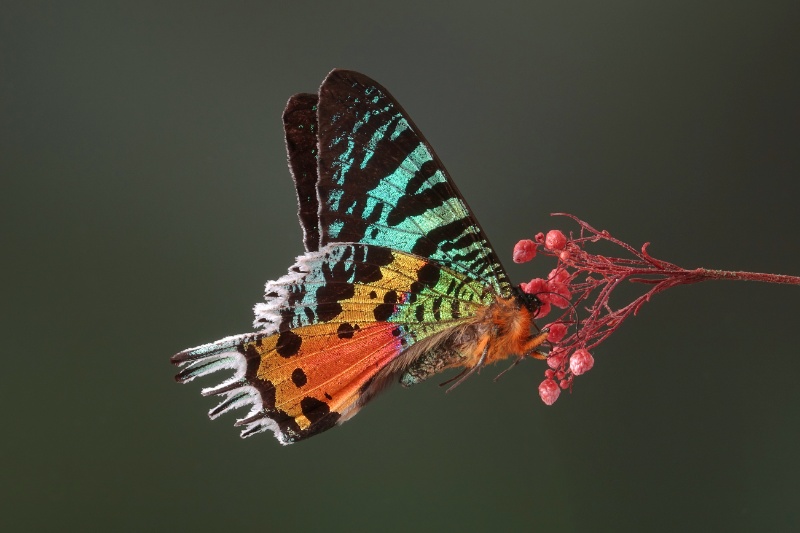
The Madagascan Sunset Moth, native to Madagascar, is known for its vibrant, iridescent wings that shimmer in the sunlight. This diurnal species is often mistaken for a butterfly due to its appearance and daytime activity.
14. Oleander Hawk Moth – Daphnis nerii, Sphingidae
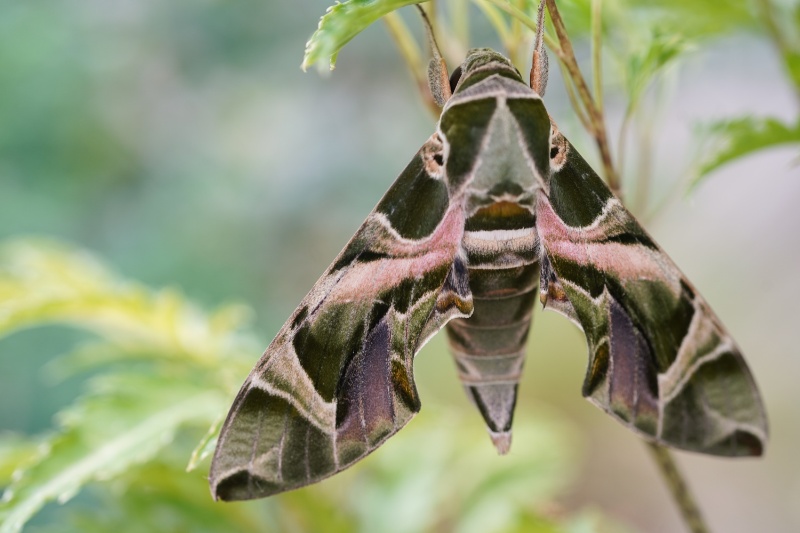
The Oleander Hawk Moth, found in Africa, Asia, and parts of Europe, feeds on the nectar of flowers like the oleander. The larvae are green with a horn-like tail and are known to eat plants from the Apocynaceae family.
See Related: Poisonous Insects
Moth Habitats
Moths are a diverse group of insects with over 160,000 species found worldwide. They inhabit a wide array of habitats ranging from forests and grasslands to agricultural fields and urban areas.
In forests, moths can be found residing in tree canopies, leaf litter, and understory vegetation. While some species are generalists, others have specific host plants or ecological niches. For example, the leaf roller moth (family Tortricidae) feeds on various tree species, causing damage by rolling leaves together to create shelter for their larvae.
Grasslands and meadows provide suitable habitats for moths like the day-flying burnet moths (family Zygaenidae) which are commonly found in these open areas. These moths are often associated with specific plants, such as legumes and grasses, upon which their larvae feed.
Agricultural fields can be home to moth species that are considered pests, such as the cotton bollworm (family Gelechiidae), which infests crops like cotton, corn, and tomatoes. These agricultural pests can cause significant damage to crops and are often targeted for control measures.
Urban environments may seem less hospitable to moths, but many species have successfully adapted to these habitats. Streetlights attract a variety of nocturnal moth species, while some, like the clothes moths (family Tineidae), have taken up residence indoors and feed on natural fibers found in garments and carpets.
Overall, moths are highly adaptive and can be found across an extensive range of habitats. Their presence within various ecosystems highlights their diverse feeding strategies, ecological roles, and adaptability of these intriguing insects.
Frequently Asked Questions
What are the most common types of moths found in homes?
The most common types of moths found in homes belong to the families Geometridae and Noctuidae. Geometridae moths, known for their inch-worm larvae, have approximately 15,000 described species. Noctuidae is the largest family of moths, with around 25,000 known species worldwide.
Which moth species are considered the most visually striking?
While many moths are known for their dull, brown appearance, numerous species are visually striking. Some examples of vibrant and colorful moths include the Atlas Moth, the Luna Moth, the Io Moth, and the Rosy Maple Moth. These species display a wide range of intricate patterns and vivid colors.
How can I identify the different species of moths?
Identifying different moth species can be challenging, as they have four wings and can often resemble butterflies. To successfully identify them, look for key differences such as wing structure, antennae, and body size. Additionally, consider factors like habitat, behavior, and feeding preferences, which can provide hints to a moth’s species.
What factors attract moths to a residential space?
Moths can be attracted to residential spaces for various reasons, such as food sources, shelter, and light. Some moth species are drawn to indoor spaces in search of food, like fabric moths feeding on textiles or pantry moths consuming stored food. Outdoor lights can also attract moths, as they are naturally drawn to light sources at night.
How do moth species vary in size and color?
Moth species display a diverse range of sizes and colors. Some species possess wingspans larger than a human hand, while others may be merely a few millimeters in size. Colors exhibited by moths can range from dull brown to vibrant hues of red, yellow, green, and blue; the latter are often seen in diurnal (day-flying) species.
What is the difference between moths and butterflies?
Moths and butterflies are both members of the Lepidoptera order but differ in a few key aspects. Moths typically have feathery antennae, while butterflies tend to have club-shaped antennae.
Additionally, moths are often nocturnal and brown in color, whereas butterflies are usually diurnal and brightly colored. However, it is important to note that these distinctions are not always absolute, and there are exceptions in both groups.
Related Resources